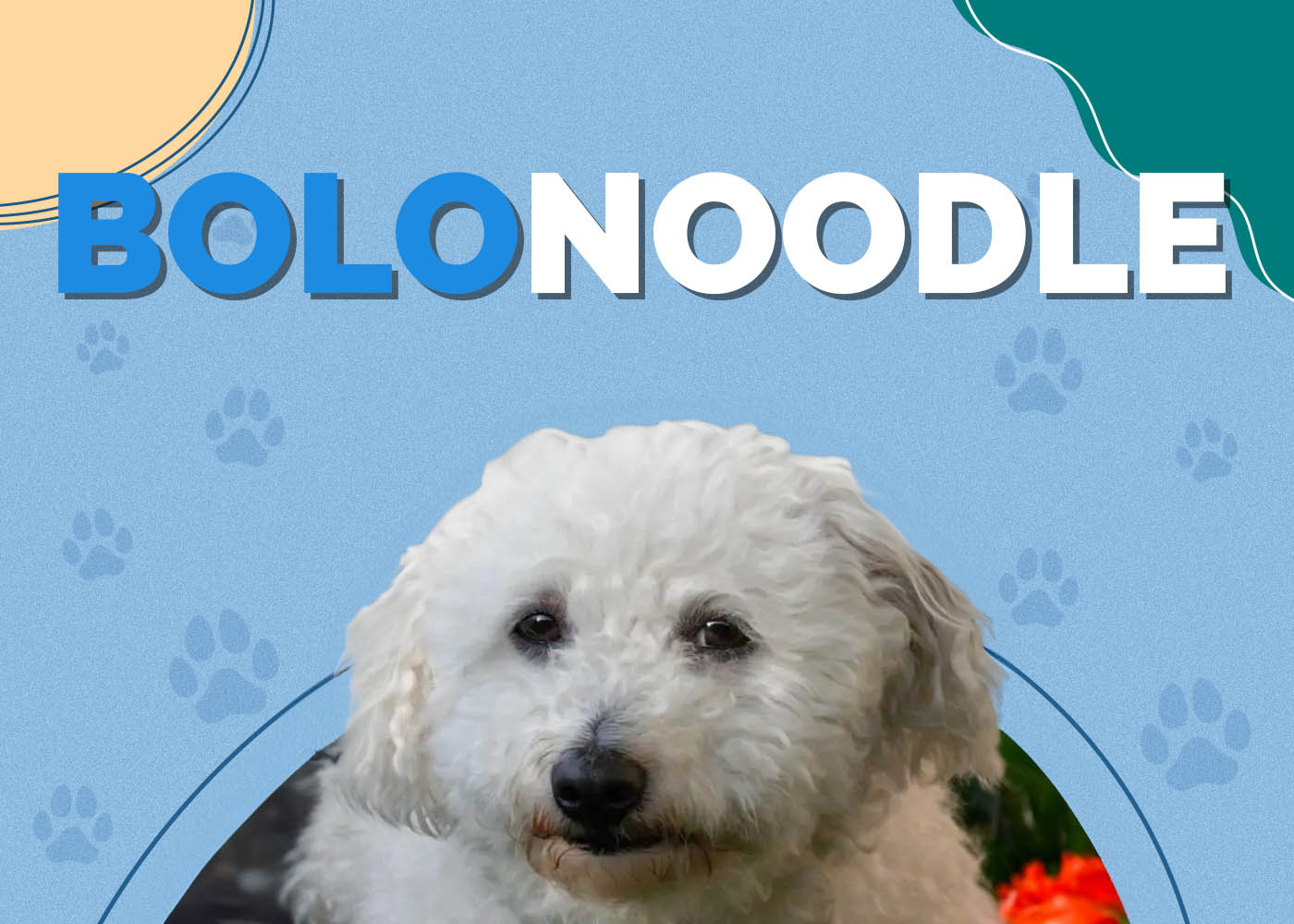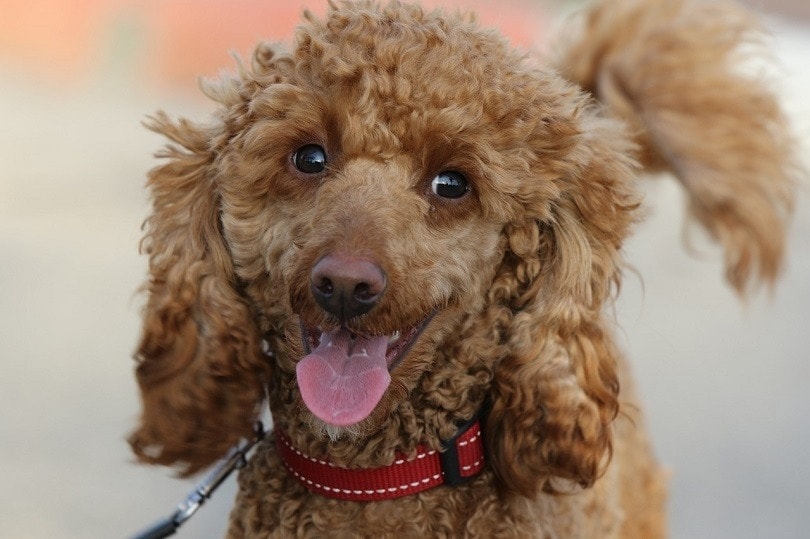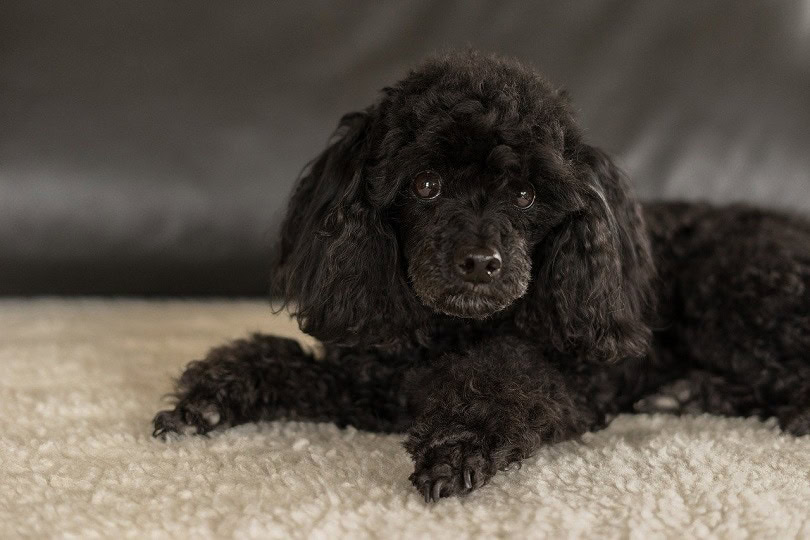Bolonoodle (Bolognese & Poodle Mix): Info, Pictures, Characteristics & Facts

Updated on

Height:
10 – 12 inches
Weight:
5 – 9 pounds
Lifespan:
12 – 15 years
Colors:
White, cream
Suitable for:
Children, elderly, small families, apartments
Temperament:
Fun-loving entertainers, smart, attention hogs
The Bolonoodle is a mixed breed created by mixing a Bolognese with a Poodle. They have a single-layer coat that stands off their body in long curls. The coat is usually white or cream-colored, but many other colors are less common. They have a short snout and long droopy ears, and their eyes are round and dark.
The Bolonoodle was created in the United States and has grown in popularity over the last 15 years.
Bolonoodle Puppies
When you’re looking for a Bolonoodle, take your time to find a reputable breeder. A high-quality breeder will charge higher prices, but there is a better chance your puppy will be healthy and have fewer problems later in life. They can screen puppies for health issues and they should let you meet the puppy’s parents or siblings. The internet allows us to do plenty of research into the breeders before we make any purchases, and there are plenty of breeders available.
If your heart is set on adopting, you might get lucky to find a Bolonoodle at a dog shelter. It might take some time, but you can also ask for other mixed breeds that resemble the Bolonoodle.
3 Little-Known Facts About the Bolonoodle
1. Bolonoodles are smart enough to play games and attempt to trick you into doing what they want.
2. The Bolognese parent is centuries old and was a popular dog as early as the 11th century.
3. The Bolognese parent almost went extinct before it was restored in Europe by a few breeders.

Temperament & Intelligence of the Bolonoodle 🧠
The Bolonoodle is a small breed of dog that loves to be a part of the family and enjoys playing games. It’s well known for playing tricks to get what it wants and can set up complex traps. They are smart and can be trained to perform tricks but quickly get bored and might move on to other activities. They are always extremely social and insist on being by your side. It’s friendly towards everything and would make a poor watchdog.
Are These Dogs Good for Families? 🏡
Yes, these are one of the best family dogs you can desire. They are more than suitable to have around children, and they will provide each other with hours of fun. Parents will enjoy the low maintenance they require. They are extremely entertaining and will often play games with unsuspecting family members. They get along with other pets and are comfortable in small apartments as well as large homes.
Does This Breed Get Along with Other Pets? 🐶 😽
Yes, the Bolonoodle makes fast friends with all animals, and any arguments that this dog gets into will almost certainly be the other guy’s fault. This breed will also get along with squirrels and rabbits that pass through the yard. We found it just as likely to play jokes on other animals as it is to play them on humans, and sometimes it can be quite entertaining.

Things to Know When Owning a Bolonoodle
In this section, we’ll look at the different aspects of the Bolonoodle to uncover some of the things you should consider before purchasing one.
Food and Diet Requirements 🦴
The Bolonoodle will require between one half and one cup of food per day spread out over two feedings. The food should be of high quality from a reputable brand. It should contain complete nutrition and use high-quality meats and vegetables. Stay away from brands that use a lot of strange ingredients, meat byproducts, and chemical preservatives like BHA.
Daily Exercise Requirements 🐕
The Bolonoodle requires less exercise than many other brands and is usually happy with only a short walk each day. This breed tends to get plenty of exercise playing games and tricks around the home and will require little else. We recommend devoting 20-30 minutes of your time each day to exercise with your Bolonoodle.
Training 🦮
The Bolonoodle is a little more difficult to train than some of the other breeds we’ve discussed. It’s not because they are not intelligent enough – they have Poodle in them to ensure their intelligence. The problem is that they quickly become bored and move on to other things, many times before you even get started with your training session.
However, you can attempt to train your Bolonoodle by standing in front of your pet with a treat to get its attention. Repeat a command like “Sit,” over and over again, while trying to get your dog to do the trick. If you are successful and your pet sits down, give him a treat. If your pet is patient enough to try this exercise several times, they will likely learn the word and obey the first command, especially when they want a treat.
Grooming ✂️
The Bolonoodle does not require a lot of grooming, but you will need to comb through the coat often to ensure there are no tangles present that can cause your dog discomfort. They will also require frequent trimmings to help keep them looking neat and kept. They will not require frequent bathing, nor do they shed often.
Nail trimmings and tooth brushing are also important for a comfortable gait and a healthy mouth.
- See Also: 11 Best Dry Dog Shampoos
Health and Conditions ❤️
These small dogs suffer from a few different afflictions that we’ll look at in this section.
- Hip Dysplasia
Hip dysplasia is common in larger dogs, but because the Bolonoodle is predisposed to obesity, it is very common in this breed as well. Hip dysplasia is a deformity of the hip socket that causes the joint not to fit together correctly. Over time this incorrect fitting will cause the joint to wear out, causing pain and reducing your pet’s ability to move about freely.
- Diabetes
Just like humans and many other animals can get diabetes, dogs can as well. The risk of getting diabetes is higher in dogs that are overweight, and since the Bolonoodle is predisposed to becoming overweight, this problem is also a concern with this breed. Symptoms include excessive thirst, weight loss, and increased appetite.
- Obesity
Two things contribute heavily to obesity in the Bolonoodle breed. The first is a lack of exercise. It’s common to purchase these dogs for small apartments and forget to put time aside for walks and other exercises. In some cases, children can grow or move away, reducing the exercise available to the dog.
The second reason so many Bolonoodle dogs are overweight is overfeeding. These dogs require such a small amount of food that it’s easy to overfeed, especially if you like to give your pet a lot of treats. Even a few treats is a lot of food to these small dogs
- Luxating Patella
Luxating patella is a condition that causes the kneecap to move out of place. Over time your kneecap can wear out and slip out of place more and more often. This condition will affect the amount of weight your dog can place on the leg and will reduce its mobility. It will also predispose your dog to other injuries like torn ligaments.
Male vs Female
Both the male and female Bolonoodle stand at the same height and are the same weight. In fact, there are no discernable differences between the two. Some claim that the male exhibits alpha behavior, but we did not witness it in our experience with this breed.

Final Thoughts
We hope that you have enjoyed reading about this new breed of dog that’s becoming more popular every day. The Bolonoodle is friendly and family-oriented, doesn’t require much exercise, and gets along with all of your other pets. This dog is also a jokester and likes to play tricks on family members and other animals. If you have learned something new, please share this look at the Bolonoodle on Facebook and Twitter.
See Also:
- Wirehaired Pointing Griffon-Poodle Mix: Pictures, Care Guide, Temperament & Traits
- Sheltidoodle (Shetland Sheepdog & Poodle Mix): Info, Pictures, Facts
Featured image credit: parxel, Pixabay














